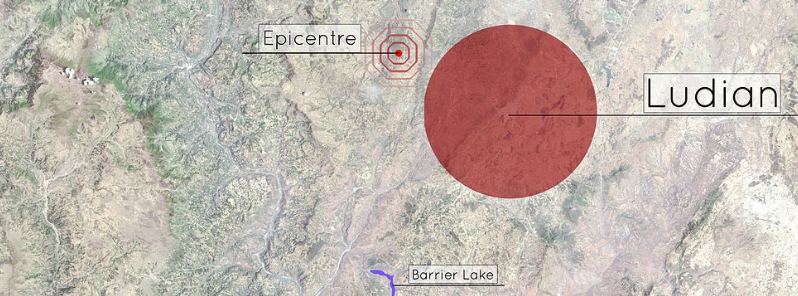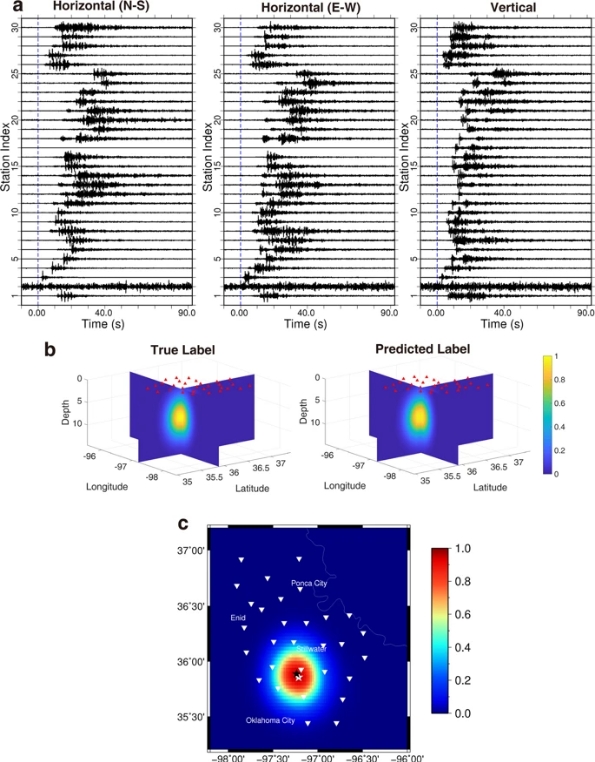China launches first AI earthquake monitoring system

After six years of study, researchers from the University of Science and Technology of China (USTC) have developed the world's first artificial intelligence seismic monitoring system. This AI earthquake tracking system can report all source parameters within two seconds.
The team, led by Professor Zhao Cuiping at the Earthquake Prediction Institute of China Seismological Administration, said the system underwent testing at experimental fields in the provinces of Sichuan and Yunnan for a year, where all parameters were reported in one to two seconds.
It can also operate in real-time to process huge seismic network data, mitigating labor pressure and lessening false alarms.
When an earthquake occurs, the wave signal is transmitted to the seismic network. Professionals use theoretical algorithms to process such data and gather parameters such as the magnitude, time of the event, depth, rupture mechanism, and the epicenter.
Fast and automatic digital algorithms are being used by other countries to acquire seismic data, but the results often show false positives, said the researchers. Thus, the combination of automatic algorithms and manual calculation results by professionals is the major means of earthquake monitoring.
After six years of study, the team's collaborative efforts led to the launch of the world's first AI seismic monitoring system.
Based on the comparison of 446 quake evaluation findings in 2019, the China Earthquake Administration showed that the unmanned "smart ground motion" monitoring system and manual calculations generated nearly accurate results.
The system's ability to report earthquake that early will help in notifying the public promptly to take proactive measures, at the same time terminate the operation of major facilities, slow down high-speed rail, and identify rescue plans. Furthermore, the system has lessened the pressure of manually monitoring earthquakes 24 hours a day.
The research and development teams are currently seeking cooperation and promotion opportunities with international earthquake monitoring agencies in countries where quakes happen frequently such as Japan, Mexico, and Turkey.

The prediction results for a testing event. Image credit: Zhang, et al.
References
"Real-time earthquake monitoring using a search engine method" – Zhang, J. et al – Nature Communications – DOI: 10.1038/ncomms6664 (2014)
Abstract
When an earthquake occurs, seismologists want to use recorded seismograms to infer its location, magnitude and source-focal mechanism as quickly as possible. If such information could be determined immediately, timely evacuations and emergency actions could be undertaken to mitigate earthquake damage. Current advanced methods can report the initial location and magnitude of an earthquake within a few seconds, but estimating the source-focal mechanism may require minutes to hours. Here we present an earthquake search engine, similar to a web search engine, that we developed by applying a computer fast search method to a large seismogram database to find waveforms that best fit the input data. Our method is several thousand times faster than an exact search. For an Mw 5.9 earthquake on 8 March 2012 in Xinjiang, China, the search engine can infer the earthquake’s parameters in <1 s after receiving the long-period surface wave data.
"Locating induced earthquakes with a network of seismic stations in Oklahoma via a deep learning method" – Zhang, X. et al – Scientific Reports – https://doi.org/10.1038/s41598-020-58908-5
Abstract
The accurate and automated determination of small earthquake (ML < 3.0) locations is still a challenging endeavor due to low signal-to-noise ratio in data. However, such information is critical for monitoring seismic activity and assessing potential hazards. In particular, earthquakes caused by industrial injection have become a public concern, and regulators need a solid capability for estimating small earthquakes that may trigger the action requirements for operators to follow in real time. In this study, we develop a fully convolutional network and locate earthquakes induced during oil and gas operations in Oklahoma with data from 30 network stations. The network is trained by 1,013 cataloged events (ML ≥ 3.0) as base data along with augmented data accounting for smaller events (3.0 > ML ≥ 0.5), and the output is a 3D volume of the event location probability in the Earth. The prediction results suggest that the mean epicenter errors of the testing events (ML ≥ 1.5) vary from 3.7 to 6.4 km, meeting the need of the traffic light system in Oklahoma, but smaller events (ML = 1.0, 0.5) show errors larger than 11 km. Synthetic tests suggest that the accuracy of ground truth from catalog affects the prediction results. Correct ground truth leads to a mean epicenter error of 2.0 km in predictions, but adding a mean location error of 6.3 km to ground truth causes a mean epicenter error of 4.9 km. The automated system is able to distinguish certain interfered events or events out of the monitoring zone based on the output probability estimate. It requires approximately one hundredth of a second to locate an event without the need for any velocity model or human interference.
Featured image credit: Map of 2014 Ludian Earthquake in Yunnan, China/USGS

Commenting rules and guidelines
We value the thoughts and opinions of our readers and welcome healthy discussions on our website. In order to maintain a respectful and positive community, we ask that all commenters follow these rules:
We reserve the right to remove any comments that violate these rules. By commenting on our website, you agree to abide by these guidelines. Thank you for helping to create a positive and welcoming environment for all.